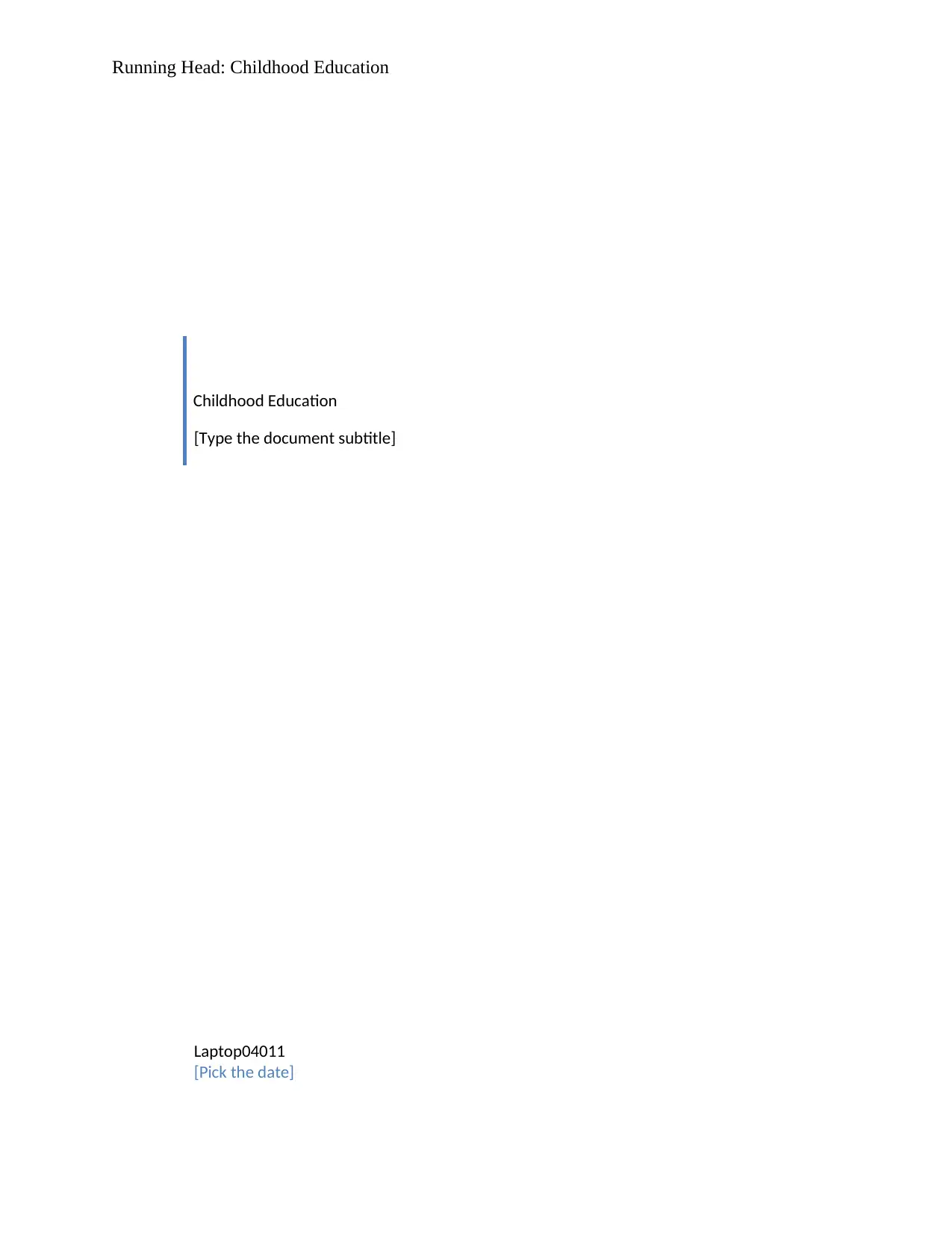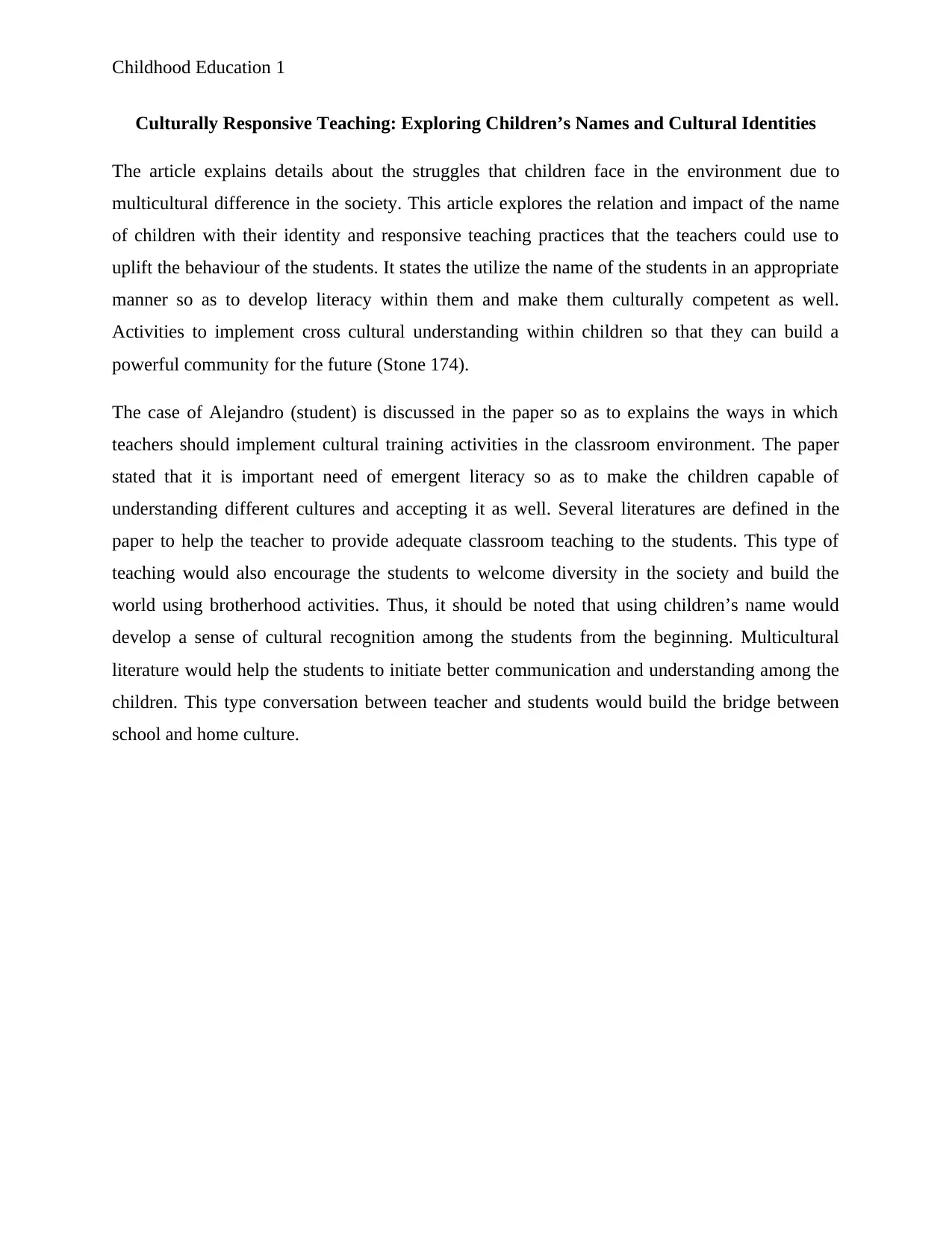Childhood Education: Exploring Cultural Identities and Teaching
VerifiedAdded on 2022/08/11
|3
|328
|20
Report
AI Summary
This report examines the significance of cultural identities in childhood education, drawing upon the article 'Culturally Responsive Teaching: Exploring Children’s Names and Cultural Identities'. It highlights the struggles children face in multicultural environments and emphasizes the importance of using children's names to foster a sense of belonging and cultural recognition. The report discusses the implementation of responsive teaching practices, focusing on the role of teachers in promoting literacy, cross-cultural understanding, and the development of a strong classroom community. It references the work of Stone (2014) and the experiences of Alejandro Brice to illustrate how teachers can incorporate cultural sensitivity into their teaching methods, ultimately aiding students in developing a positive self-identity. This report underscores the need for teachers to bridge the gap between home and school cultures, promoting multiculturalism and fostering a welcoming environment for all students.
1 out of 3










![[object Object]](/_next/static/media/star-bottom.7253800d.svg)